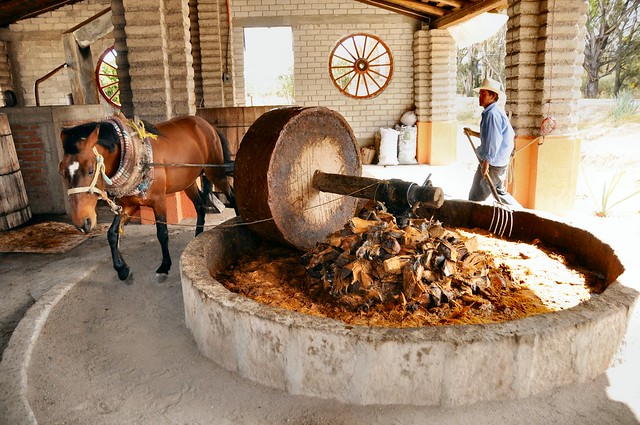Mezcal Vs Agave
- On May 1, 2018
When I recommend tequila as an option, I usually hear a few common answers: “I had one too many shots one time and I had the worst hangover, “ or “I’m too old to fool around with that.” I usually hear the same with mezcal, usually something about drinking down to the worm and a bad night in Cancun, or more commonly,”smoky tequila.” WELL, I’m here to educate and set the record straight.
First and foremost, tequila is mezcal. In proper terms, a mezcal is any distilled spirit made from the agave plant. This includes tequila, mezcal, bacanara, and raicilla. The main differences between Mezcal and Tequila are three main points
- Tequila and Mezcalare made in different areas of Mexico as determined by their internationally recognized Denominations of Origin (DO), like wine.
- Mezcal can be made in 9 specific states in Mexico: Oaxaca, Durango, Guanajuato, Guerrero, San Luis Potosí, Tamaulipas, Zacatecas, and Michoacán
- Tequila can be made in 5 states: Jalisco, Michoacán, Guanajuato, Nayarit, and Tamaulipas
- Michoacan, Tamaulipas, and Guananjuato are states that can produce both.
- Mezcal can be made from about 50 different varieties of the agave family, similar to different grapes for wine, the most common is Agave espadin. Tequila must be made from Agave tequilana, more commonly known as Blue Weber.
- To cook the plants in preparation for production, tequila producers use pressure cookers to make a clean, fresh product. Mezcaleros, or people who make mezcal, utilize earthen pits to slow roast the agave, creating the well known smoky flavor.
The agave plant is part of the succulent family. Blue Weber agave can take anywhere between 8 and 14 years to ripen. Espadin, a close relative to blue weber, has a similar maturity time, but other agave can take up to 30 years to mature. In ancient times, the agave sap was used to make a fermented beverage called pulque with 3-5% alcohol, like beer. It is still made today and served in cans but rarely finds its way to the states. Around 1500 AD, distilling was likely introduced to Mexico by the Spaniards, and just like Irish whiskey, they locals distilled the common alcoholic beverage to make something magical: mezcal.
Around 1600, the first distillery was established by Don Pedro Sanchez de Tagle, a Spanish noble, near the town of Tequila. While modern distilling techniques have influenced some production methods, the art of making mezcal has essentially stayed the same: harvest by cutting the agave leaves to reveal the heart or piña; cooking the piñas to break down the starches to sugars; crushing piñas to extract juice, typically done utilizing a large stone wheel and powered by a donkey; fermentation; and double distillation.
In 1795, Jose Maria Guadalupe de Cuervo received the 1st official permit to commercially produce mezcal from the King of Spain. It was officially called “Vino Mezcal de Tequila,” since it was produced near the town of Tequila. Around 1875, producers around Tequila asked the government if they could call their product Tequila, which the government allowed. Finally, producers around the town stopped using underground pits to cook agave, instead utilizing above ground ovens, thus the flavor of tequila and mezcal became very different. The main factor was the deforestation near the town due to the excessive amount of wood needed to cook the agave.
Technically, tequila can be made with as little as 51% agave and up to 49% corn, sugarcane, or other alcohol. The key to finding good tequila and mezcal is looking for 100% agave on the label. Finally, on Thursday May 3rd, try 2 tequilas and 2 mezcals with Aaron at the tasting bar. Hope to see you there!




0 Comments